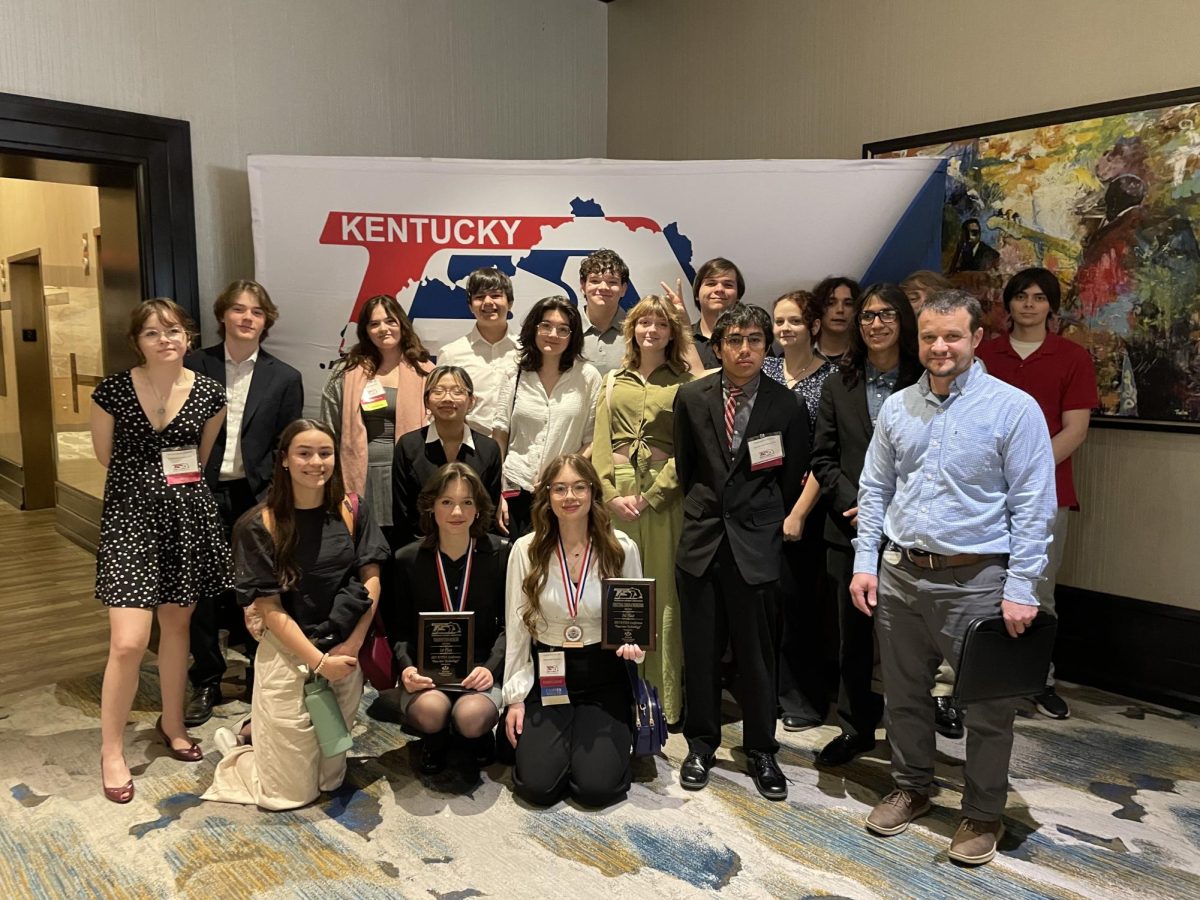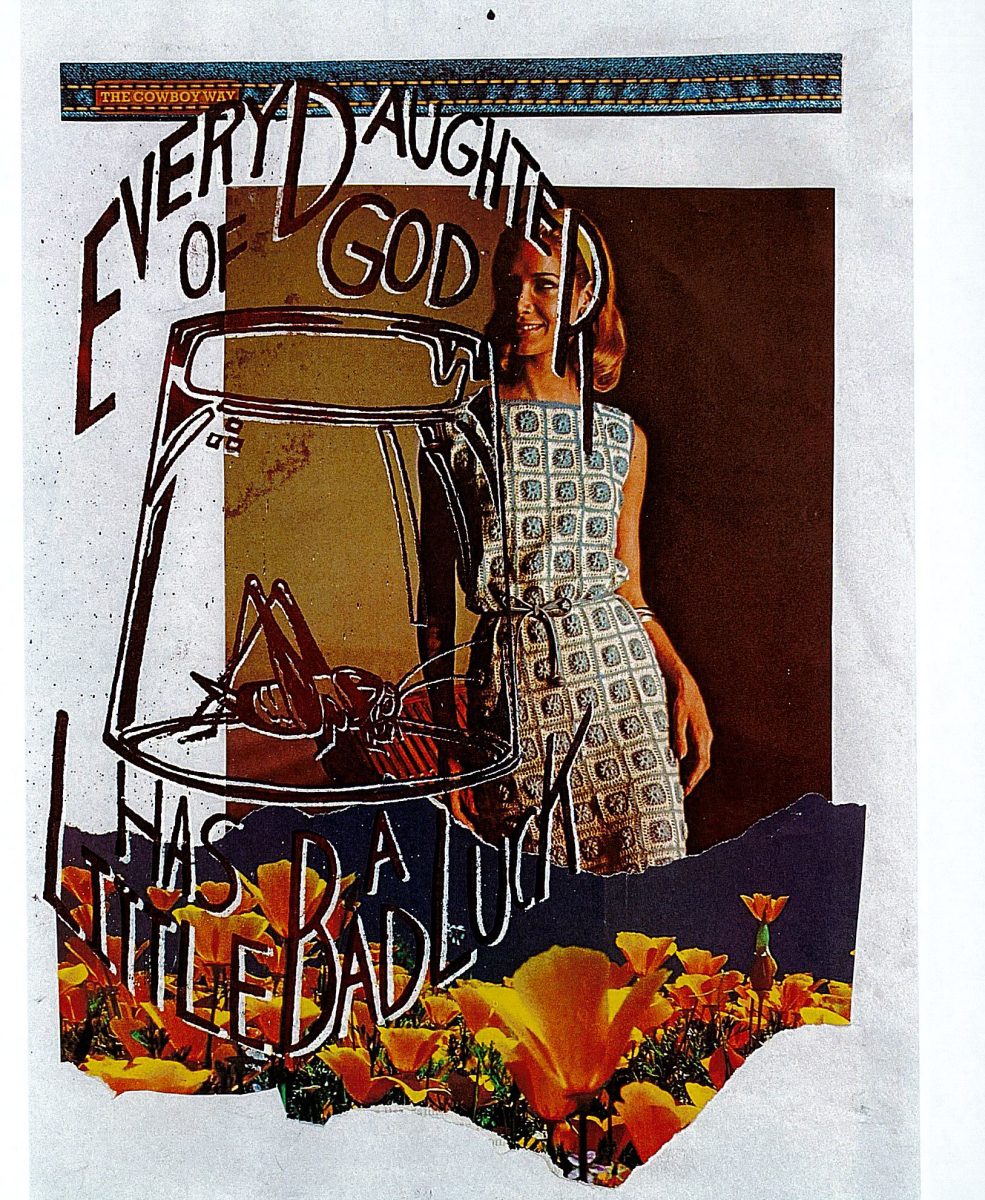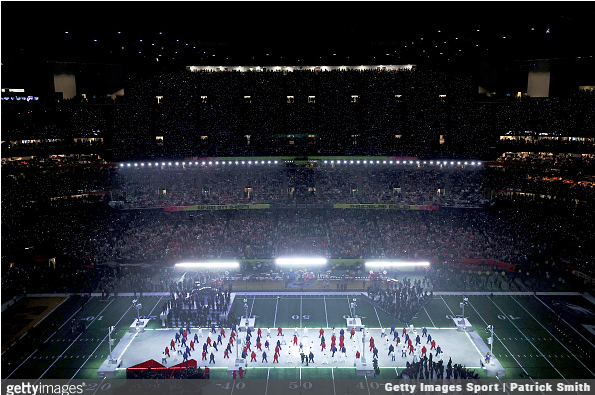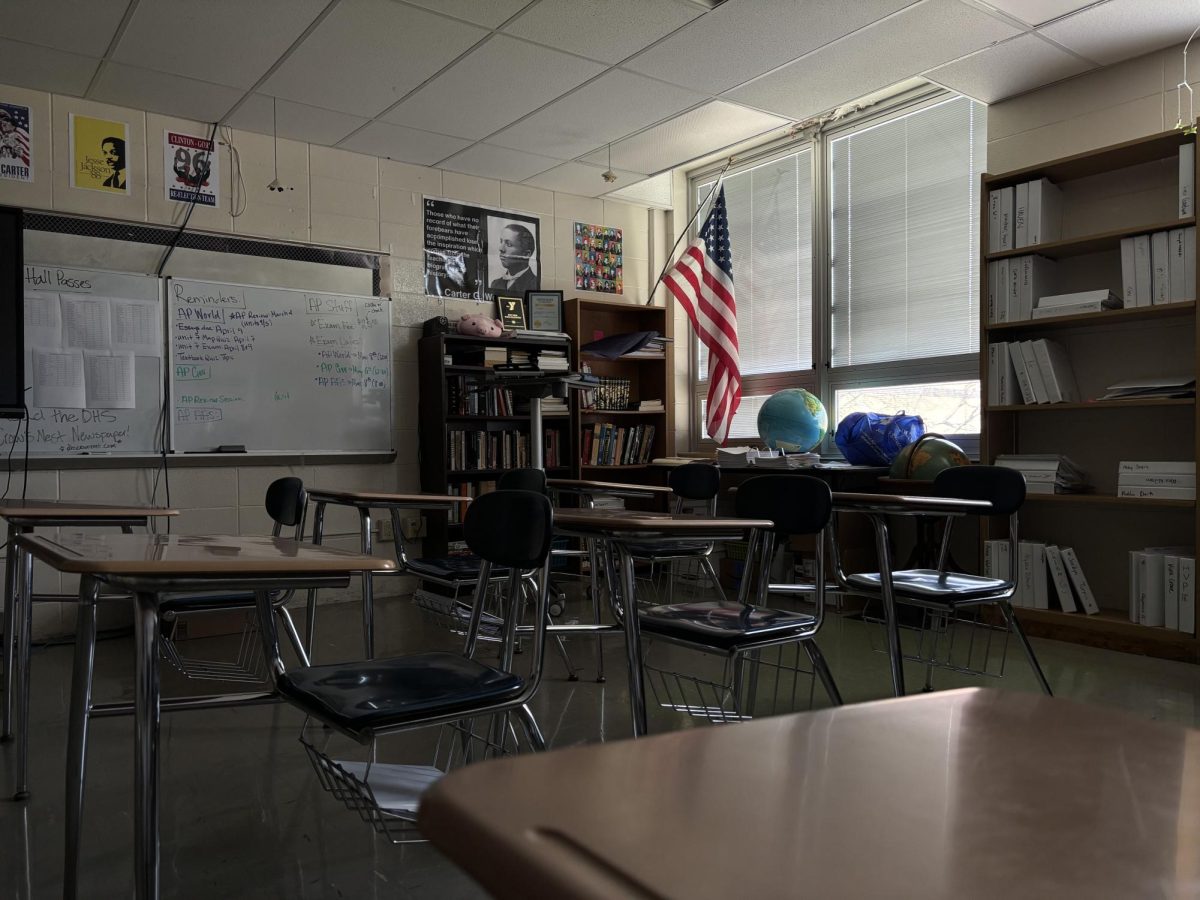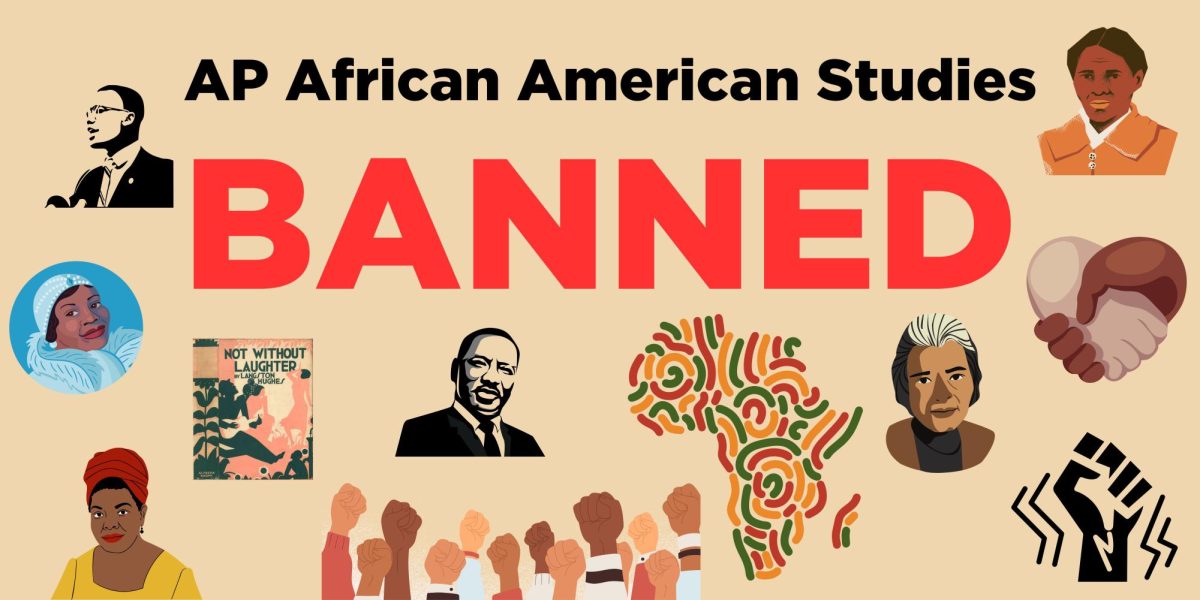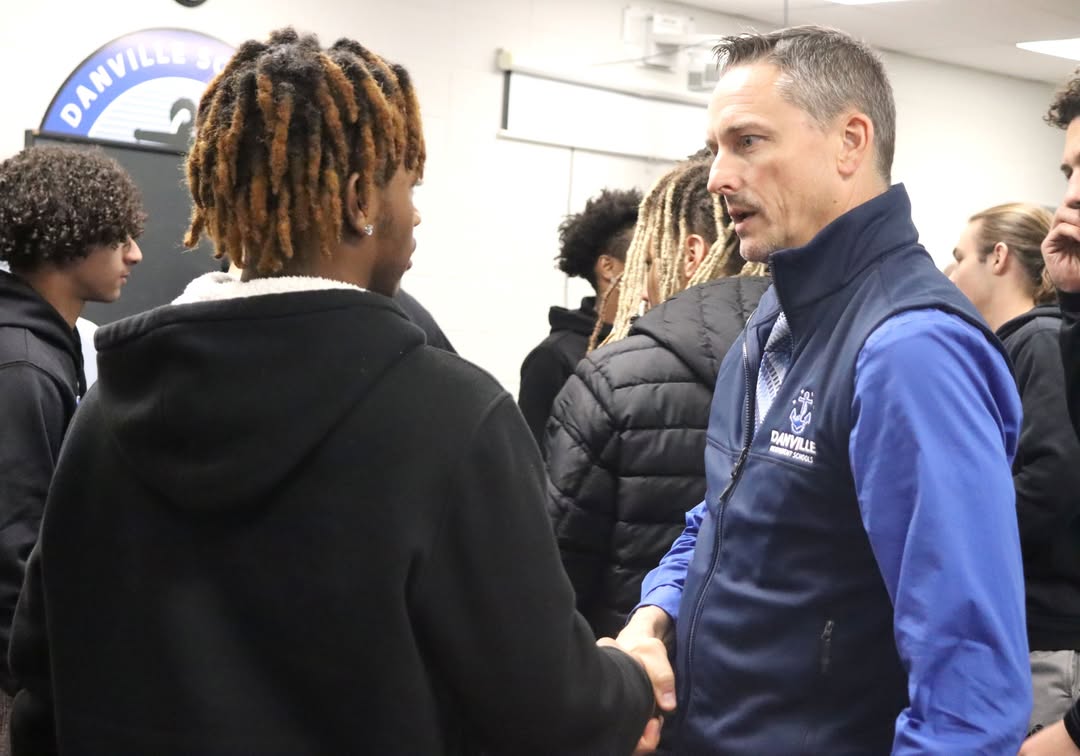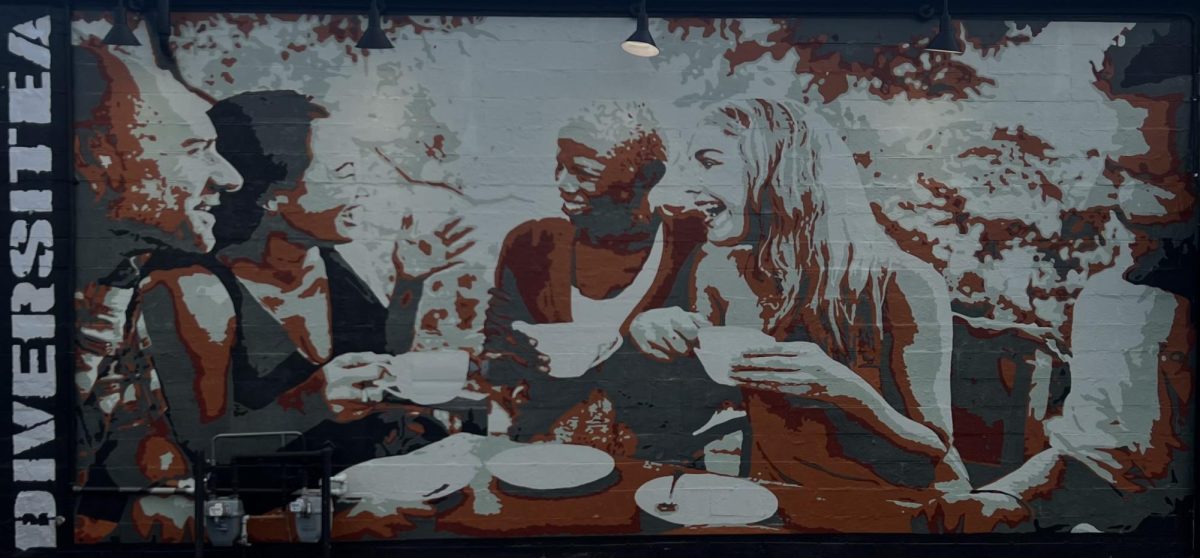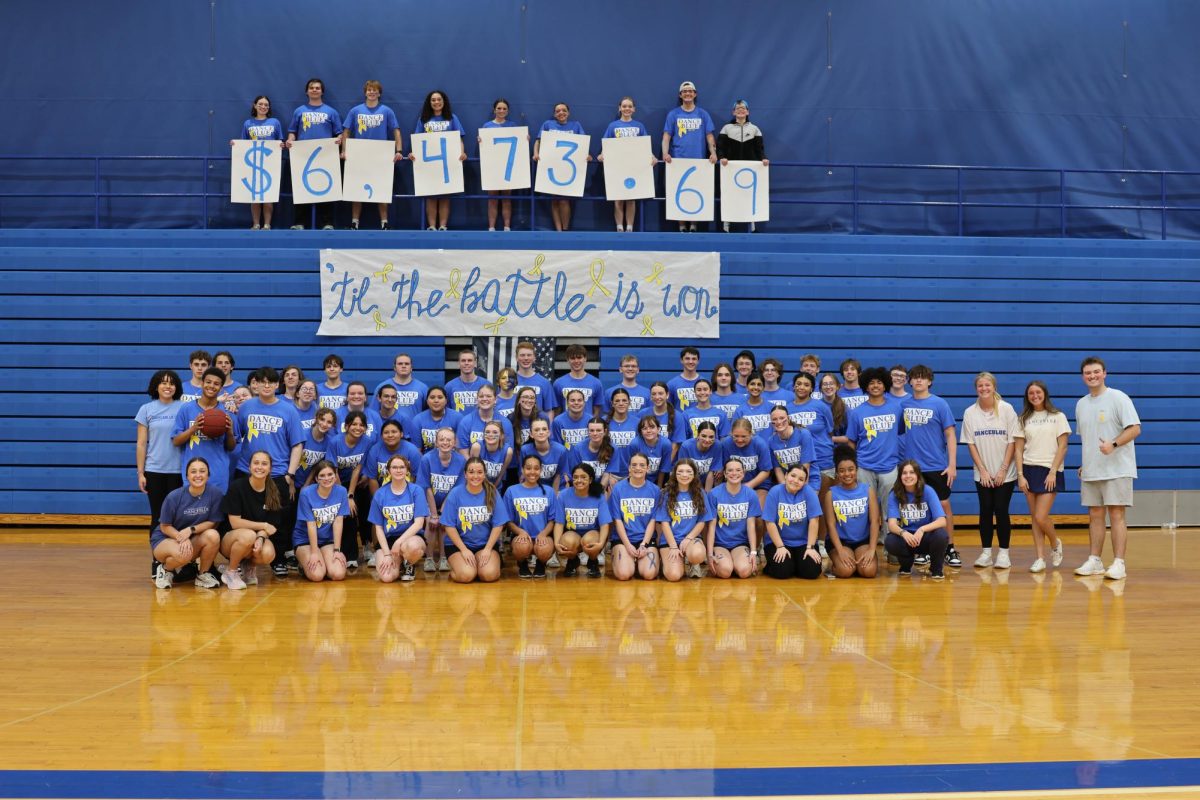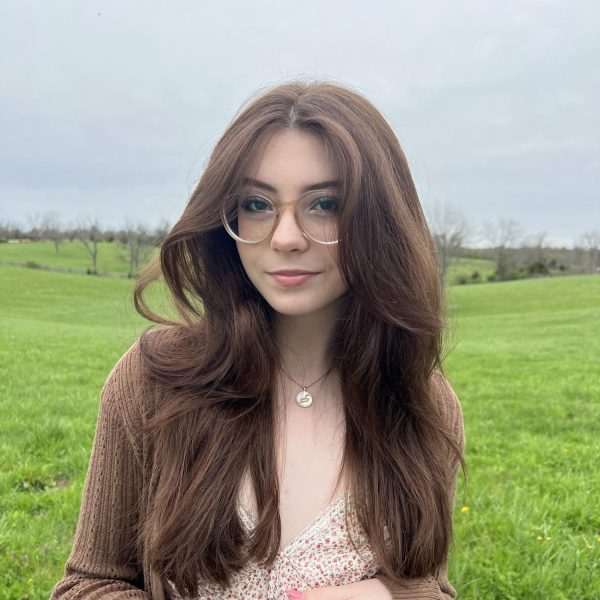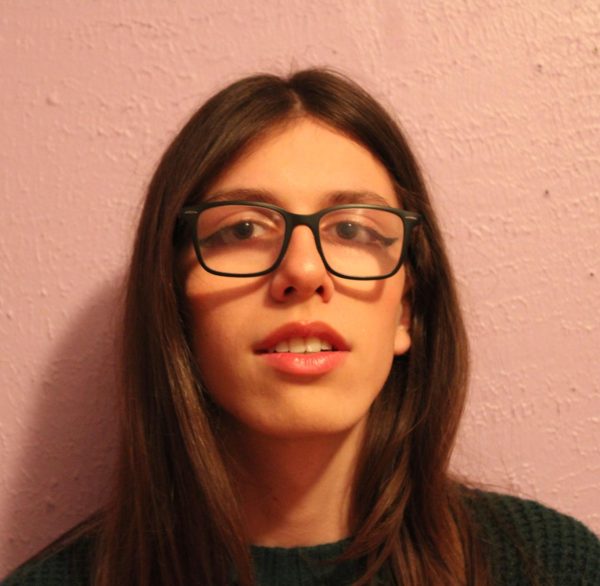Danville High School and its identity within the arts has become synonymous with the murals that plaster the walls of the school. Currently, the school features three main murals and a few other mural-adjacent works—all designed by students, faculty and staff, or guest artists. These murals have long histories, and their meanings often focus on diversity, student pride for Danville, or simply artistic togetherness. Jane Dewey, the district’s director of arts education, and Shelly Stinnett were interviewed to encapsulate the true origins and impacts of Danville High Schools’ murals/muralists.
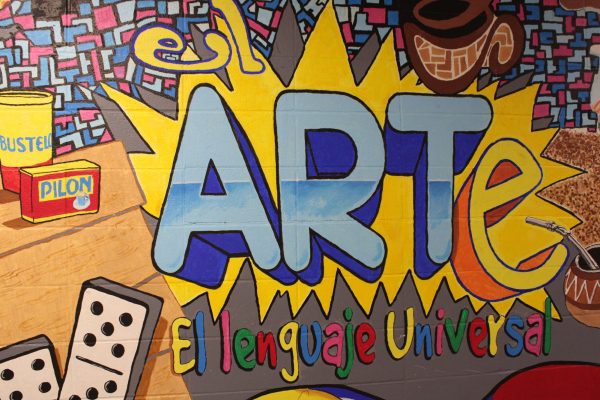
Dewey on the Mural Behind the Front Office
“Of all of them that are around right now, the first one was the one behind the office. We hosted in the summer, from 2004 to 2012 or 2014-ish, arts academies that were run by the Kentucky Department of Education or the Kentucky Performing Arts Foundation (formerly known as the Kentucky Center for Performing Arts).”
“That mural was done during an arts and world language integration professional development workshop that went on for a week. We hosted several of these events, and they included our own teachers and staff, as well as teachers from all across the state.”
“On this mural, Alfredo Escobar, a Spanish-speaking artist from Chile, worked with the teachers. Well, the mural wasn’t finished when the week was over, so the Kentucky Performing Arts Foundation offered to have Alfredo come back to finish the mural with our students, and of course, he said yes.”
“Everything we do is so dependent on funding, so when we get offered a really unique opportunity for students, we do everything we can to take advantage of it. Also, one of the really, really cool things about Alfredo being in the school was when they were painting behind the office, basically, it became a hub—students picked up that Alfredo was bilingual. Spanish-speaking students would often come just to chat; it really opened up a different way for bilingual students to have other bilingual connections within the school—to really become a part of DHS.”
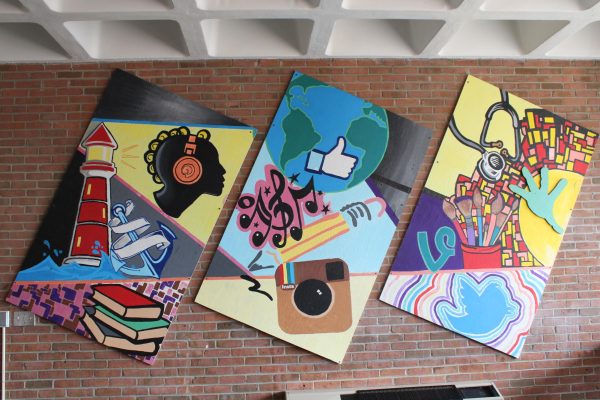
Stinnett on the Mural in the Loft
“This mural is interesting because it’s a site-specific work of art—it’s date-based, too. The icons, say the Twitter and Instagram logos, are of course not what they are now. That very much dates it. Students designed the mural as a pop-culture, site-specific work of what was relevant and representative of them at the time.”

Dewey on the Mural at the Bus-Loading Dock
“The one at the bus-loading dock, that one was much more recent. We wrote in a grant for Brandon Long to come in and to do that with our students; it happened just when COVID was ending—I have pictures where students were masked.”
“The reason behind that mural was driven by COVID, and the kind of isolation COVID caused among us all—we didn’t have that even in the classroom, that sort of social connection. Art can be a very social form, or it can be singular. Often, though, singular artforms are kind of fed by the social environment in which they are created, and having none of that for so long was hard on everybody. In talking with Mrs. Stinnett, she hit on the idea of creating something together, something associated with Danville.”

Dewey on “Art Under Pressure”
“The steam-roller prints—I would consider those mural-adjacent as well. They were a part of a guest artist project, as Mrs. Stinnett, before COVID, would always do a big, huge project at the end of the year. It started with print-making on a small scale in the classroom, and it culminated; we brought in a giant steam-roller print, and we created those in the roadway between Central Office and here. Those were taller than me, just very large panels. The students used carving tools to gouge out negative and positive spaces—that’s how those were created.”
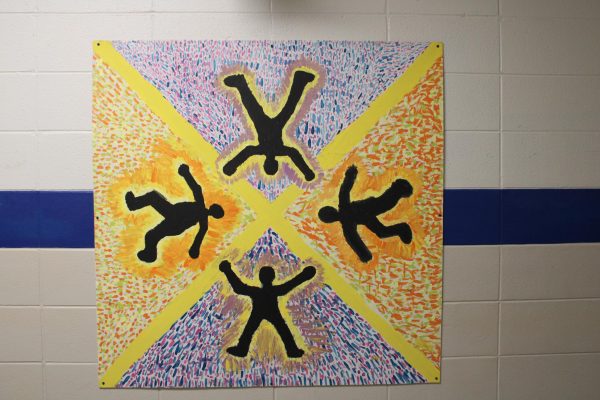
Dewey on Mrs. Katie Newton’s Mini-Mural
“This one right out here was Mrs. Newton’s class of students and the corresponding class at Bate about eight years ago. There was as much emphasis on bringing the two groups together as there was on the actual painting. It was a great way—visual art is a great way—to bring about social interaction in addition to artistic interaction … It was possible through a grant from All Arts Kentucky, and the same artist that did the mural behind the office, Alfredo Escobar.”
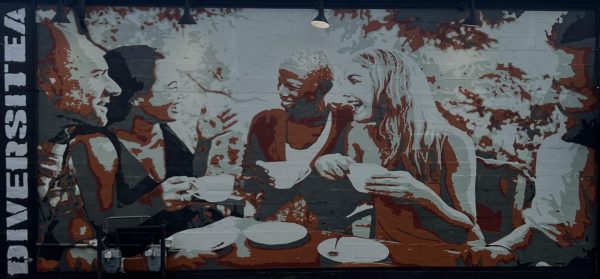
Dewey on “Diversitea”
“I’m going to mention it because Danville High School students were an intrinsic part. The mural that’s on the side of Elmwood Inn Fine Teas, ‘Diversitea,’ was done on our stage with long and wide pieces of muslin and bolts.”
“That mural was kind of the brainchild of the Sister Cities Commission—our sister city is Carrickfergus in Northern Ireland, and to have a sister city, you have to join an international group and be on the commission. Our commission decided they wanted to do an artist exchange, so we brought in Dee Craig.”
“Craig is pretty well-known in the Belfast area; the 60s murals made during the Troubles aren’t static, and he’s part of the new wave of Belfast muralists. These newer murals are much more about mending the rifts between Protestants and Catholics than about expressing the conflict. So, he came over as an exchange artist, and we were looking for a place to create the mural.”
“We came up with the idea—Mr. [Malcolm] Springs was really instrumental—of a paint frame. So, when they are painting floors or flats, and using muslin, they will raise and lower the paint frame. We basically created a makeshift paint frame, controlled by the fly lines in Gravely. It was done here at DHS and was taken over to Elmwood Inn Fine Teas.”
“It was supposed to represent the social aspects of drinking tea together that’s present in so many cultures, specifically in Great Britain, China, and Japan—there are real social norms about tea. With that and the diversity in the painting, our students came up with the name ‘Diversitea,’ and we were pretty tuned into Danville.”
Danville High School’s identity and history is quite literally ingrained in the walls of the school—representing themes varying from student spirit and individuality to culture and new opportunities.
Art has the power to invoke inspiration, carry messages and capture a wide range of human expressions that often go unsaid and unsynthesized. Public art, more broadly, has the power to move those facets unto a wider variety of people—allowing for the meaningfulness and beauty of art to be shared.
“I’m very glad that at DHS, we consider public art to be a part of who we are, a valued piece of who we are and the public face of ourselves we put forward,” Dewey said, “We aren’t a high school devoid of student expression, it’s right there, it’s who we are.”



